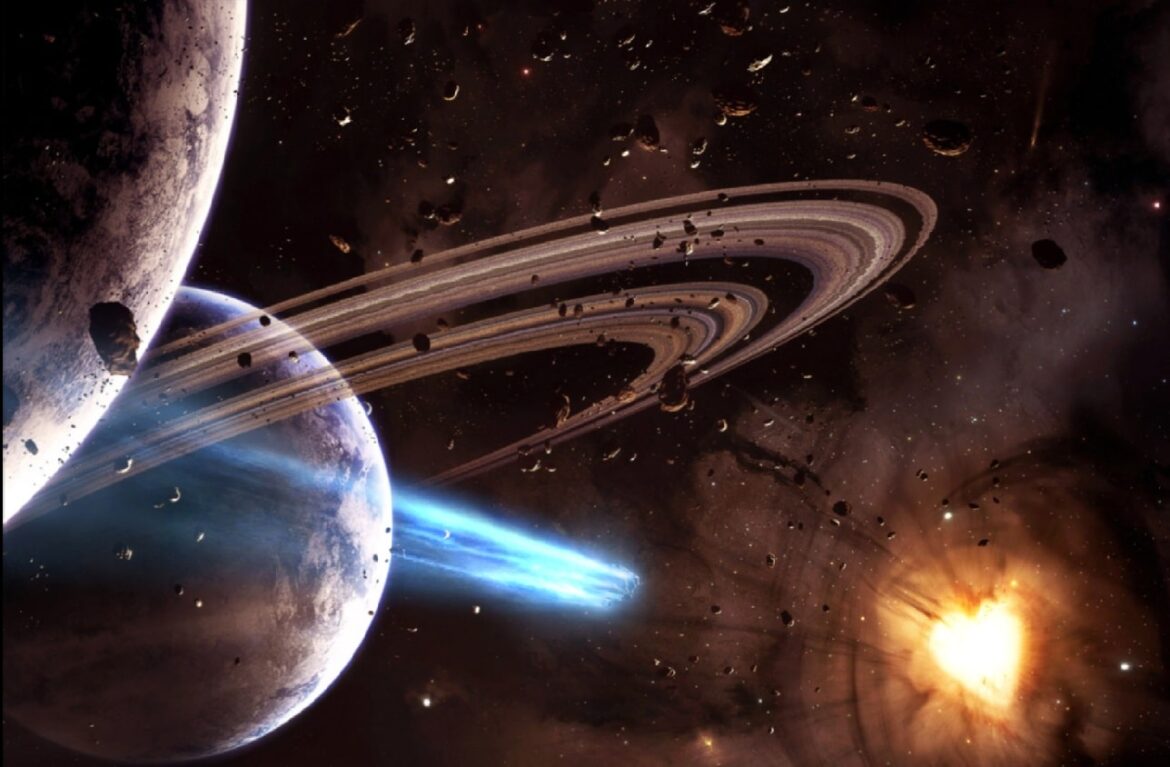1.8K
The dark age describes an early period in the history of the universe. Find out facts about this hitherto little-explored time here.
The dark ages – how the light disappeared
The dark age can be placed between the formation of the cosmic background radiation and the shining of the first stars. These began to shine around 100 million years after the Big Bang.
- Matter in the universe was transparent at this time. It neither graduated from light nor radiated any. The darkness came about because the universe cooled very quickly after the big bang. All light left the cosmos.
- Before the stars were formed, intergalactic space consisted of the primordial soup. In this soup, protons and electrons combined to form neutral hydrogen with the addition of helium. This led to all light particles being able to escape.
- The dark age got its name because astronomers cannot detect objects from this time with telescopes. In a sense, researchers can look into the cosmic past because light takes a certain amount of time to arrive at Earth.
- During this time, the stars from which it emanates may have long since gone out. So we also see objects in the sky that have not existed for a long time.
Thus the universe became bright again
Due to the fact that no dark age objects can be observed, the lightless age is still very little studied and raises many questions for astronomers.
- Experts agree that the first stars lit up space again. These were initially formed from condensations of dark matter and the primordial gas of hydrogen and helium.
- These dwarf galaxies merged into larger objects. The primordial gas cooled and the first stars were formed. These were much larger than our sun and shone in ultraviolet light.
- This light caused the hydrogen in the universe to split into protons and electrons. This process is called reionisation. Our Milky Way was formed from a merger of about a million of these dwarf galaxies.

